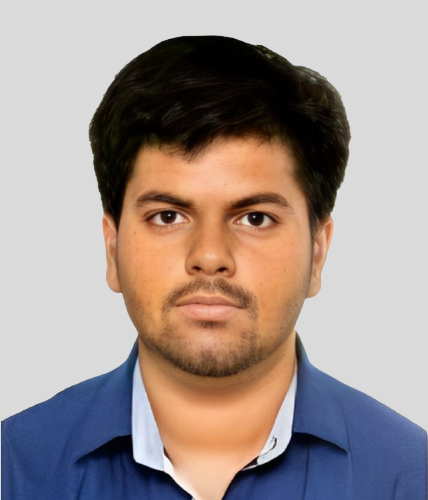Scamming the Saviors: Why Doctors Are the New Targets of Deception
The medical profession, already burdened with the stress of long hours, patient expectations, and systemic challenges, cannot afford the added trauma of being hunted by fraudsters.
.jpeg)
The medical profession has always carried with it a sense of dignity, trust, and unquestioned respect. In India, where doctors are often seen as saviors of life, society rarely pauses to imagine that these very healers could themselves become victims of deception. Yet recent events have uncovered a dark trend where fraudsters, with polished words and forged documents, are increasingly targeting doctors, exploiting their vulnerabilities, and siphoning away huge sums of money. The story of an Indore-based doctor who lost nearly Rs 1.8 crore in an elaborate job fraud is not just one man’s tragedy, it is a chilling reflection of how criminals have learned to prey upon the medical community’s trust and aspirations.
In this case, the victim, Dr. Subhash Sonkesaria, a respected resident of Rajendra Nagar in Indore, fell into the web spun by a group of men and women who projected themselves as people of influence in government corridors. The promise was a secure government job for his wife. Introduced at Index Medical College to a man named Rakesh, who claimed to be a railway employee, Dr. Sonkesaria was slowly drawn into a meticulously planned scheme. Rakesh assured him that with the right “connections,” his wife could be placed in the Railways or the Archaeology Department. What began as polite conversations soon transformed into persistent demands for money under the guise of processing charges, bribes, clearances, and departmental approvals.
Over a span stretching from 2018 to June 2024, the demands escalated, and the doctor, hoping to secure his wife’s future, complied. Each payment was justified with convincing stories and buttressed with forged identity cards, official-seeming appointment letters, and even promotion orders. At one point, calls were made to him from government-registered numbers, reinforcing the illusion of authenticity. The doctor transferred more than Rs 1.72 crore via online payments and cash deposits, while smaller sums made the total swell to around Rs 1.8 crore. With each transaction, he believed he was one step closer to the promised government job for his wife.
What he did not know was that the men and women he interacted with were not senior officials at all. They were part of a gang that had perfected the art of deceit, complete with fabricated documents and carefully rehearsed stories. Among the names introduced to him were Ratna Tiwari, Seema Tiwari, Urmila Tiwari, D.K. Singh, Lal Bahadur Saxena, and Manoj Kurmi were the individuals posing as senior officials from the Railways and Archaeology Department. They played their roles with such conviction that even a cautious professional found it difficult to doubt them.
It was only when years passed without any appointment order being honored, and suspicions became too large to ignore, that the truth began to unravel. The so-called government letters turned out to be entirely false, confirmed as forged by authorities when sent for verification. The purported orders from the Archaeology Department in Bhopal had no basis in reality. The documents bore seals and signatures that, upon closer inspection, had no official validity.
The inquiry exposed a carefully constructed chain of deceit. Bank statements revealed multiple transactions flowing into accounts linked to the accused. Electronic evidence, including WhatsApp chats, audio recordings, and copies of identity cards, painted a damning picture. The complainant had preserved every piece of communication, perhaps out of faith that it would serve as proof of the promised job. Ironically, it became the very evidence that established how deeply he had been defrauded.
An FIR has now been registered against Rakesh Suman and others under sections 420, 467, 468, and 471 of the IPC. The police have confirmed that the case was not a random instance but a systematic fraud, where forged documents and fabricated identities were used repeatedly to dupe not just Dr. Sonkesaria but possibly others too. A crime branch team has been constituted to trace the larger network, arrest the accused, and attempt recovery of the funds. Yet for the victim, the ordeal is far from over. The financial loss is huge, but what lingers more deeply is the betrayal of trust, the shame of being deceived, and the personal turmoil of having been misled for years.
The disturbing element here is not just the crime itself but the choice of victim. Doctors, often admired for their intellect and professional standing, are presumed to be insulated from such traps. But in reality, their busy schedules, immense workload, and desire for stability in their personal lives make them particularly vulnerable. A doctor who spends long hours in hospitals, caught between patient care and administrative tasks, has little time to navigate bureaucratic complexities. When someone offers to smoothen the path with apparent authority, it feels like a lifeline. Fraudsters exploit this very pressure, selling hope in exchange for money, cloaked in the credibility of official stamps and documents.
There is also a cultural context to consider. In India, government jobs continue to carry immense social prestige. They symbolize security, stability, and respect. For many families, a government position is still considered the ultimate aspiration. Fraudsters know this and prey upon it, weaving stories that exploit the dreams of families who want that badge of security. When the target is a doctor the criminals play an even bolder game, confident that the victim, for fear of embarrassment, may stay quiet for longer before reporting the fraud.
This case has also highlighted the sophisticated tools that scammers now deploy. Fake ID cards look indistinguishable from real ones. Forged appointment letters come printed with logos and official seals that would deceive even a trained eye. Calls made from government-registered numbers create a convincing illusion of authority. Technology, which should have been a tool of transparency, has become a weapon of manipulation in the hands of such gangs.
For the medical fraternity, the lesson here is not just about one doctor’s misfortune. It is about a widening trend where professionals are being targeted with scams that exploit their trust, their aspirations, and sometimes their desperation. The scale of financial loss in this single case (Rs 1.8 crore) should ring alarm bells across the healthcare sector. If such fraud can be executed over years against a well-established doctor, others are equally at risk.
The role of awareness becomes critical here. Doctors must be made more conscious of the fraud patterns that exploit their busy lives. Medical associations and professional bodies could take up the responsibility of sensitizing members, circulating regular advisories, and offering legal support when such scams surface. The same rigor with which hospitals conduct medical audits should perhaps be applied to personal and financial decision-making in professional circles.
From the law enforcement perspective, the case is also a test of accountability. Registering an FIR is only the beginning. Recovering money siphoned off through multiple accounts, often across states, requires expertise and persistence. Tracking gangs that operate with aliases and forged identities demands specialized cyber and financial investigation. Unless the accused are prosecuted quickly and visibly, the message to others in the fraternity of crime will remain weak.
At a larger level, this case holds a mirror to how deeply fraud has seeped into our social fabric. When criminals can convincingly impersonate senior government officials, forge documents, and sustain their deception for years, it points to loopholes in verification systems that need urgent reform. The fact that fake appointment letters and IDs could pass unchecked until police intervention is troubling. Robust mechanisms for public verification of such documents could have prevented the fraud from stretching so long.
For doctors across India, the incident is both a warning and a reminder. A warning that fraud does not discriminate by profession, and a reminder that vigilance is as important in personal life as it is in professional practice. The same sharpness with which a physician diagnoses a patient’s hidden ailment must be applied to promises that seem too good to be true.
The story of Dr. Sonkesaria will likely remain a cautionary tale for years, retold in medical circles as a reminder that even those who heal others can be wounded by deceit. But it also carries within it the hope that awareness, vigilance, and stronger systems can prevent repetition. The medical profession, already burdened with the stress of long hours, patient expectations, and systemic challenges, cannot afford the added trauma of being hunted by fraudsters. Protecting doctors from such exploitation is not just about shielding individuals; it is about preserving the sanctity of the profession itself.
As the investigation continues, one hopes that justice will be swift, money will be recovered, and the guilty will face the full weight of the law. But beyond the courtroom, the real challenge lies in building a culture where trust cannot be so easily betrayed, where official documents cannot be so casually forged, and where no doctor has to wake up to the realization that their faith has cost them their fortune.
 Sunny Parayan
Sunny Parayan
#healthvoice #DoctorSafety #FraudAlert #ProtectOurDoctors #StopScams #HealthcareAwareness #ScamExposed #JusticeForDoctors #CyberFraud #StayAlert #StaySafe
